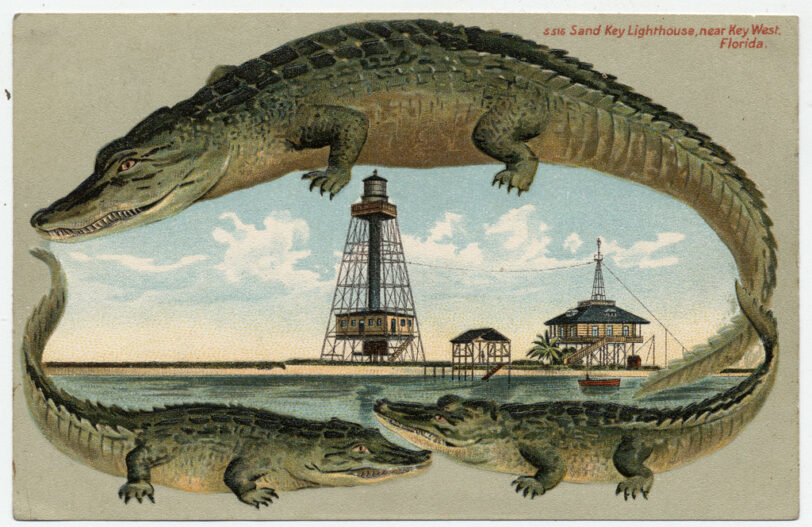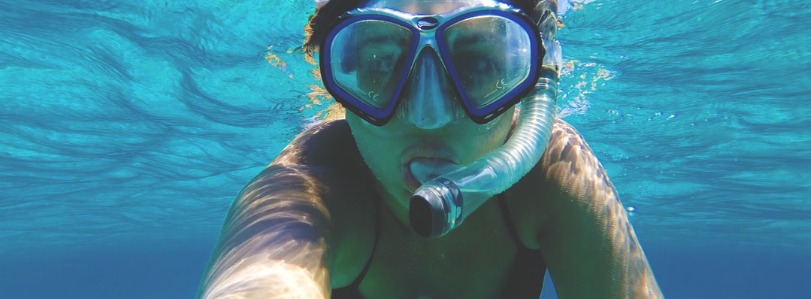Snorkeling Key West Sand Key Reef
Home to the third largest barrier reef in the world, the Florida Barrier Reef, the Florida Keys are the ideal destination for those seeking endless sunshine over beautiful tropical fish filled waters. The barrier reef itself spans the entire length of the Florida Keys and is filled with 100s of miniature reefs that in turn create the world renown reef line. One of the most popular parts of the reef line? None other than the famed Sand Key Lighthouse Reef, a reef brimming with tropical fish, corals and an ever changing beach.
What is Sand Key Lighthouse Reef
One of the best places to view an intact reef in the Florida Keys, Sand Key Lighthouse Reef is a beautiful reef circling an active lighthouse. The lighthouse was first built in the early 1800’s on a small island surrounded by reef. After a few storms, the lighthouse had fallen but was then, many years later, rebuilt into what it is today. During those years, more storms barreled through, including one in 1856 that took all of the sandy island away with it, leaving only sand and rock under the water line.
Today, the lighthouse, also known as Sand Key Light, sits on a constantly changing foundation of sand. But don’t worry, under the sand is a screw-pile foundation keeping the lighthouse from rocking back and forth. The amount of sand that will be there when you visit is determined by mother nature herself – her tides and winds either blowing in your favor or not.
The reef surrounding the lighthouse is actually one of the healthiest reefs around. Here you’ll find schools of tropical fish in the hundreds, along with other passing marine life. If you swim up to the lighthouse from your boat, cover your face as you’ll most likely see a few flocks of birds up above.
One of the reasons that Sand Key Lighthouse Reef is in such good shape, especially compared to some of the nearby declining reefs, is the strict no-take policy. Once on the reef, which you’ll find marked by colored buoys, you are not allowed to take marine life of any kind, whether it be live shell collection, spearfishing, fishing, or lobstering.
You are also not allowed to anchor on the reef itself but rather tie up to one of the marked buoys found at various points throughout the entire reef. Due to this rule, it’s best to arrive earlier in the day to beat the crowds. Otherwise, you’ll have to anchor outside of the reef and swim in.
Sand Key Lighthouse
The iconic Sand Key Lighthouse is an important historical landmark for the city of Clearwater, Florida. The lighthouse stands at a height of 24 feet and has been guiding ships since its construction in 1882. It has become an integral part of the landscape, providing both a navigational aid and a beautiful photo op for tourists.

Recently, extensive renovation efforts were undertaken to keep the lighthouse in good shape. The project included repainting the exterior, replacing deteriorated parts, and installing new safety features such as handrails and lights around the base. This work was funded by local donations as well as federal grants from Historic Preservation Programs.
The repairs were completed last month and now visitors can enjoy viewing this iconic structure up close without having to worry about their safety or be concerned about contributing to its deterioration.
Sand Key Lighthouse Reef activities
Though fishing is not allowed within reef boundaries, there are many other great activities to enjoy.
- Swimming– If you love to swim, you’ll have plenty of room to do so here, just make sure to keep an eye out for snorkelers during the afternoon.
- Snorkeling– With varying depths of 1 to 15 feet immediately surrounding the lighthouse, you’ll find lots to look at while safely away from boaters.
- Scuba Diving– The further you go from the lighthouse, the deeper it gets making for a perfect scuba diving trip. Here you’ll find both coral and sand to dive over, each showcasing a different habitat.
- Underwater Photography– With so much to see, you better make sure to have your camera out and ready.
- Kayaking– Who says you can’t kayak in the middle of the ocean? For those who want to visit the reef without being in it, bring a kayak or two out on the boat with you.
- Paddleboarding– Get a bird’s eye view, well sort of, as you paddleboard around the reef.
The lighthouse itself, although currently serving as an active light, can not be visited as the stairs are in great decline. You may walk underneath, but be warned- there are exposed wires and rusty beams that could cause harm.
Marine Life
With a large abundance of marine life, both big and small, you’ll be sure to see many different species during your visit. Some of those are:
- Tropical Fish– Here you’ll find large schools of fish including: grunts, snapper, hogfish, angelfish, grouper, spotted drum, trumpetfish, triggerfish, parrotfish, butterflyfish and different types of wrasse.
- Sea Turtles– Though there are several different species that call Florida waters home, the two that you are most likely to see are Hawksbill and Loggerhead.
- Sharks– Don’t scream! Sharks get a bad rap, one that shouldn’t influence your decision to get into the water. Here you’re more than likely going to see a few nurse sharks resting on the reef bottom. You also may see a bull shark cross your path.
Location
Sand Key Lighthouse Reef and all of its surrounding reef line is located about 6 nautical miles (6.9 miles) southwest of Key West. Situated between two channels, Sand Key Channel and Rock Key Channel, Sand Key Lighthouse Reef is an easy boat ride to and from.
Locals and visitors alike can visit the reef by private boat or tour.
